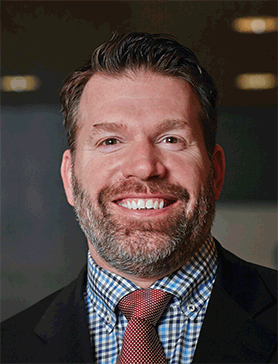2016 CEOs Who 'Get It'
The National Safety Council recognizes seven leaders who demonstrate a personal commitment to worker safety and health

 |
 |
Bill Koziel
President and CEO
SAC Wireless
Schaumburg, IL
 |
Accomplishments
Founded in 1996, SAC WIRELESS develops and implements network infrastructure for telecom companies throughout the United States. SAC offers a complete portfolio of self-performing services to support major network builds, 4G LTE upgrades and indoor/outdoor small cell and Distributed Antenna Systems. The company employs 700 full-time workers. |
Why is safety a core value at your organization?
Safety is a core value because our people are who we are. We value each and every associate as one of our own family. Our first core value is “Hire and Develop Great People.” The first step to achieve this is to ensure that safety is our primary core competency and that all our employees know the value we hold to make certain that they all return home safely to their families each and every day.
As a nationwide tower services company, our two biggest risks are driving and fall hazards at the jobsite. While we train for all hazards our employees may face, we concentrate heavily on these two hazards and ensure our personnel have the best advantages we can give them. Safety is absolutely a core value in this company and I cannot overstress its significance.
Describe your personal journey to becoming a CEO who “gets it.” What experiences or lessons brought you to where you are now?
I learned early on in my construction/project management career that if you do not personally emphasize the importance of safety and diligently enforce it on any project, you are not effectively managing the project. Although we are required to manage schedules and budgets, the ramifications of one unfortunate incident not only can stop a project, but – most importantly from a basic conscientious and human standpoint – it can have disastrous consequences on a person’s life.
The nature of the wireless industry requires us to realize that if you are going to be successful in the business, you must be safe first. The inherent hazards are just too great.
What is the biggest obstacle to safety at your organization, and how do you work to overcome it?
Growth. As a constantly evolving company, we must grow, and growth requires the hiring of new talent into our organization. With that come aspects of safety culture from other companies whose values may not align with ours or that, dare I say, have no safety culture at all.
Our first core competency is “Make a personal commitment to safety every day,” and this is the daily credo that I and my entire organization live by.
Youth and inexperience are also a concern. Many of the tower climbers we hire are young. This necessitates establishing the safety culture from the ground up (pardon the pun). Each and every new employee, experienced or not, receives a minimum of two to three weeks of training based on position. During this time we instill our values and culture into them and continue with a vibrant weekly safety meeting process, daily job safety analysis and weekly inspections of all equipment.
How do you instill a sense of safety in employees on an ongoing basis?
The safety process does not end after the initial training period. We continue the process by having weekly safety topics that go to all personnel in the company. We also hold weekly crew meetings to address and discuss the issues that our personnel are managing as well as the safety topic. We further continue this process by having monthly meetings with all field personnel and their superiors to address and emphasize issues that we believe are important to maintain our safety culture. We then schedule specific upcoming training sessions and events to make certain that personnel understand the serious nature of this company’s commitment to safety.
We reinforce this process so every employee feels empowered to stop work if they have any safety concerns and is confident that their decision will be respected and the issue will be addressed.
How does your organization measure safety?
We utilize both lagging and leading indicators. The lagging indicators are our incident metrics and the leading indicators are derived from our site safety audits. We share these results with our construction teams and contractors/vendors by demonstrating where they are excelling and where we may need to concentrate our efforts. I am a firm believer in improvement, so we never stop trying to get better at what we do – and safety is key.
We plan to expand our Site Safety Audit Program in the coming year, asking our personnel for even more intense involvement in the safety process to increase their ownership in safety while creating a successful end product.
What role does off-the-job safety play in your organization’s overall safety program?
As a services-based company, our people are our greatest asset. We strive to ensure our personnel stay healthy and fit. We offer a wide range of wellness plans, including well-discounted gym memberships, diet plans and personal care services. We also provide a series of programs to help improve well-being and the quality, cost and transparency of health care by promoting prevention and early detection. The program includes resources to help subscribers manage weight, control stress and stop smoking.
Post a comment to this article
Safety+Health welcomes comments that promote respectful dialogue. Please stay on topic. Comments that contain personal attacks, profanity or abusive language – or those aggressively promoting products or services – will be removed. We reserve the right to determine which comments violate our comment policy. (Anonymous comments are welcome; merely skip the “name” field in the comment box. An email address is required but will not be included with your comment.)

